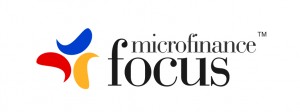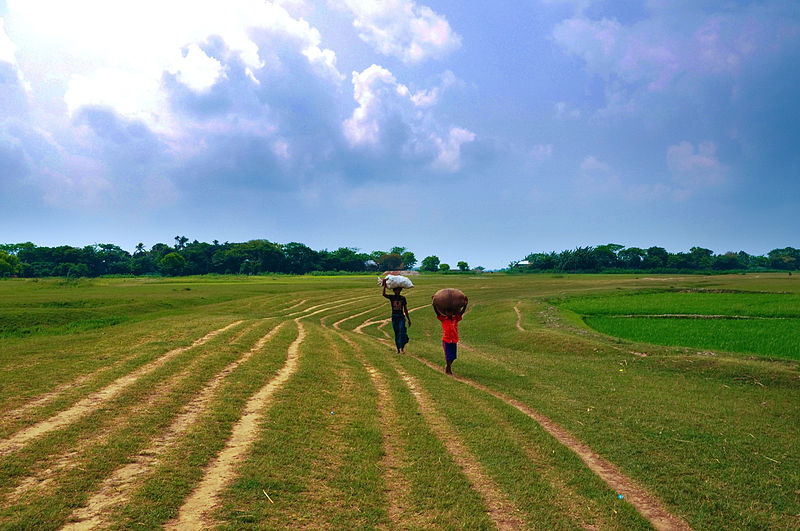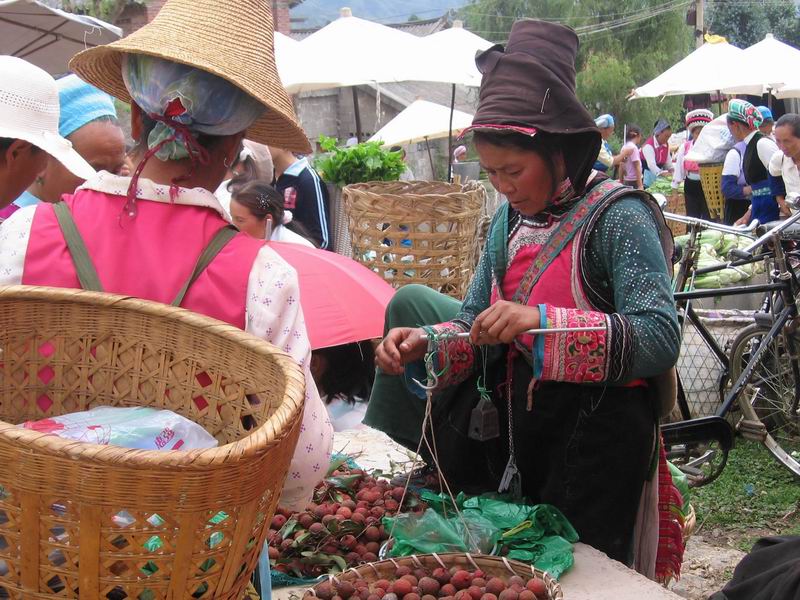Peer to Peer Microfinance
13:45 to 15:15 CST: As peer to peer microfinance grows in popularity and becomes more accepted as a means of providing financial services to the poor, the discussion of best practices becomes increasingly relevant.
This session, moderated by Mr. Bai Chengyu, Secretary General of the China Association of Microfinance (CAM), discussed how best to provide peer to peer microfinance to both individuals and enterprises from micro to small to medium (MSMEs), as well as how P2P services can be bundled with other financial products beyond lending. What is P2P’s advantage over other models, and how can it be made sustainable?
Session participants also discussed monitoring peer-to-peer lending, achieving social impact, and the role that MFIs and other financial stakeholders play in this increasingly common segment of microfinance. What is P2P’s advantage over other models, and how can it be made sustainable?
First to speak was Mr. Soul Htite, Co-founder of Lending Club & CEO/Founder of Dianrong, a peer-to-peer loaning service that now has over 700 loans, totaling over 100 million RMB as of April 2014. “China needs infrastructure,” said Mr. Htite, and that includes management: the company worked to hire Chinese staffers who could “tackle the problem of ‘How do I help a small business in China get access to funding?”‘
Today, Dianrong has about 700 people, with 100 focused on technology. He noted he often finds himself explaining what Diangrong does not do, rather than what they do do – and their particular interest in direct P2P lending.
“The idea of servicing the loan is important,” he said, noting that this is built into the P2P lending platform. And the platform matters: in the past two and a half years, said Mr. Htite, Dianrong has spent much of its time and energy on shaping it.
“If you compare our technology to banking technology,” he said, the difference is this: in a bank flows money from one organization to many. Meanwhile, the P2P platform fosters lending from many to many.
With the platform, clients are able to evaluate how their loans are doing in real-time, the same technology bankers use everyday. Mr. Htite stressed, however, that Dianrong is not a banking or a technology company, but a service company.
Dianrong offers what it calls core P2P services: helping companies enter the sector. Dianrong also offers compliance services, online marketing, and other much-needed functions, said Mr. Htite.
In addition, Dianrong has come up with additional products that are currently mature and already available in the US – but must be built to maturity in China’s newer industry.
Finally, Dianrong prides itself on having a flexible model that can be used in multiple ways, said Mr. Htite. A temple in China, for example, could focus on giving donations to single mothers or students, in a loose integration model. A large company, meanwhile, may prefer a customer-facing site, and can thus choose any model they like.
Next to speak was Mr. Nicholas Lafaye, Kiva’s Portfolio Manager for Southeast Asia and the Pacific, who discussed the popular P2P lending non-profit’s work in the region. The site was founded in 2005 with the mission of connecting entrepreneurship with social investors or lenders, allowing lenders to give small donations to their chosen beneficiary.
Kiva loans have no interest rates, while the risk of default is born by the lenders, said Mr. Lafaye, who added that any given time four to five-thousand loans are being funded at any given time. The model adheres more closely to indirect loaning, said Mr. Lafaye, and works with organizations including MFIs, social businesses, schools, and nonprofits.
All organizations that work with Kiva must show a strong commitment to working with poor, vulnerable, and/or excluded populations – either via financial services, or by using this credit to expand access to products and services for the needy.
Some of the market niches Kiva has penetrated alongside its partners are the green and ecological sector, water and sanitation, agriculture, fair trade, higher education health, start-up, mobile technology, and underbanked and underserved populations. Mr. Lafarge stressed Kiva is not just product centered, but can also work with specific geographical regions.
Kiva has funded close to $600 million in loans across 77 countries with 1.2 million Kiva lenders, largely based in the US and Western countries. The repayment rate is close to 99 percent.
What are some of the challenges Kiva faces? The first is seeking operational sustainability, a challenge that any organization faces – which matters particularly to Kiva, as it is dependent on donations. Lenders who make loans on Kiva usually make a donation at the same time, which helps support the site but also presents yet another risk, as it is not reliable to survive on donations. Kiva has considered charging its partners.
Secondly, Kiva faces regulatory barriers, including capital flight restrictions, provisioning policy, foreign debt limitations, and so on. Argentina, for example, has regulatory barriers that are considerable and has barred it from entering the market. Although India has strict regulations, Kiva decided to tweak its model so it could adhere to Indian laws
“To ensure Kiva’s survival, we will probably not do that again,” said Mr. Lafarge, although the size and appeal of the market made it attractive in this instance. Kiva does not currently operate in China, but should have this operation functioning within the next year.
Kiva’s best practices include transparency, which helps its lenders make decisions about who they will fund. “We share a lot of information about the borrowers and the field partners, explaining why we partnered with them,” he said.
Second is client protection, which Mr. Lafarge identified as “core” to Kiva’s functions. While borrower profiles are fairly detailed, partners must explain to borrowers how the information will be used, and that it will be published and shared with the public. Borrowers must sign a waiver to use the service. “Any P2P borrowing organization needs this system to be successful,” said Mr. Lafarge.
Kiva capital is intended to help borrowers innovate and create new products, and product flexibility is key to this process. Agricultural loan products may require a bullet repayment structure, for example, and partners are allowed to try new things within the Kiva platform to meet what are often widely divergent borrower needs.
Other examples include a grace period for higher education, disaster relief loans that may have a longer term and lower interest rates, and higher loan amounts that can be extended to migrant populations.
Third to speak was Mr. Zhou Zhihan, Deputy General Manager at Kaixindai Financing Services at Jiangsu Co., Ltd, a state-owned P2P company in China. “Kaixindai means ‘Happy Credit,”’ said Mr. Kaixindai, who noted that numerous financial institutions serve China’s SMEs.
These institutions include MCCs, pawn shops, guarantee corporations, and others. But this entails two conflicts: many good microfinance institutions cannot get more resources to expand their business, while many SMEs cannot get enough financial support, while at the same time, China has one of the world’s highest saving rates.
The China Development Bank proposed to build a P2P lending platform in 2011 to help SMEs get cheaper and easier loans. CDB launched this service in Jiangsu province, where there are 1 million SMEs, and where credit is very popular.
One of China’s most developed regions, there are 600 microcredit companies, 100 billion in outstanding loans, and these companies cover 70 percent of village areas. All of Jiangsu’s MCCs share a centralized IT system, with existing business operations, accounting processing, and other functions – allowing CBD to use big data technology to control the risk of MCCs.
Kaixindai’s Internet platform links many different parts into one organization, linking borrowers and investors while at the same time analyzing the risk of MCCs. Local MCCs are able to recommend local SMEs and thus provide guarantees to investors, while the clearing bank provides professional services in fund settlements, and prevents illegal financial activities, such as money laundering. All borrowers who use Kaixindai must open a clearing bank account.
Kaixindai uses a five level risk control system, said Mr. Zhihan, strictly controlling the entrance and exist of MCCs. Only 15 percent of Jiangsu’s best MCCs were permitted to join. After due diligence, MCCs are given a credit line, while the MCCs must give a guarantee to the borrower. A joint provision pool has also been built in, as well as a joint liability guarantee.
Kaixindai has already benefited over 2700 SMEs with zero bad loans, and turnover exceeding 4.4 billion, with 2.3 billion in outstanding loans.
“The most important aspect of Kaixindai is reducing the total cost of SMEs by using Internet technology,” said Mr. Zhihan, noting that MCCs charge 4 percent as a guarantee, while the online platform charges less than 1 percent. Thus, more and more MCCs now wish to join the network. The People’s Bank of China recently deemed the Kaixindai model “a good example to society.”
The fourth to speak was Mr. Wang Zhengyu, CEO of peer-to-peer lender China Rapid Finance, who discussed using P2P microfinance as an aspect of creating dynamic financial ecosystems for the poor.
“We try to give a global perspective on our P2P – where it comes from, what are the issues involved,” he said. China Rapid Finance, based in Shanghai was begun in 2001 and began its activities in selling consumer credit-risk systems to financial firms, but soon moved into connecting individual investors to small borrowers. It is incorporated in the US, and is said to be considering a initial public offering in the US stock market.
Mr. Zhengyu noted that there is huge potential for the Chinese market to grow further in the consumer credit market, with yearly growth of about 28 percent yearly in mortgages and consumer loans. The credit card market in China is not dominant, as it is in the US, and is moving slowly. However, the Chinese P2P market is much bigger than it is in the US, and is now the world’s largest.
P2P, said Mr. Zhengyu, grew from the credit card market, in part because many people in the sector came out of the credit card area. Globally, he said, P2P companies may differ from one another, but all show strong vitality.
Currently, P2P companies and the market are very hot, both in China and globally. China’s market today, he said, has more than a 1000 and potentially as many as 2000 companies doing P2P lending.
However, China lacks good credit data on P2P lending, forcing P2P companies to bear the additional cost of collecting this information. “That’s why the overall dynamic between the US and the China market is different,” he said, noting that this will change as China’s credit reporting improves.
Finally, Mr. Zhengyu noted that China Rapid Finance’s business model does not touch the funding side at all, instead putting lenders money into separate, individual accounts. Its competitive edge, he said, is its corporate governance and collection abilities, among other advantages.
Mr Chengyu was joined by Mr. Soul Htite, Co-founder of Lending Club & CEO/Founder of Dianrong, Mr. Nicholas Lafaye, Kiva’s Portfolio Manager for Southeast Asia and the Pacific, Mr. Zhou Zhihan, Deputy General Manager at Kaixindai Financing Services at Jiangsu Co., Ltd, and Mr. Wang Zhengyu, CEO of China Rapid Finance.
The session was facilitated by the China Association for Microfinance (CAM), China’s only national-member based microfinance association, with a focus on offering financial services to previously under-served groups.







